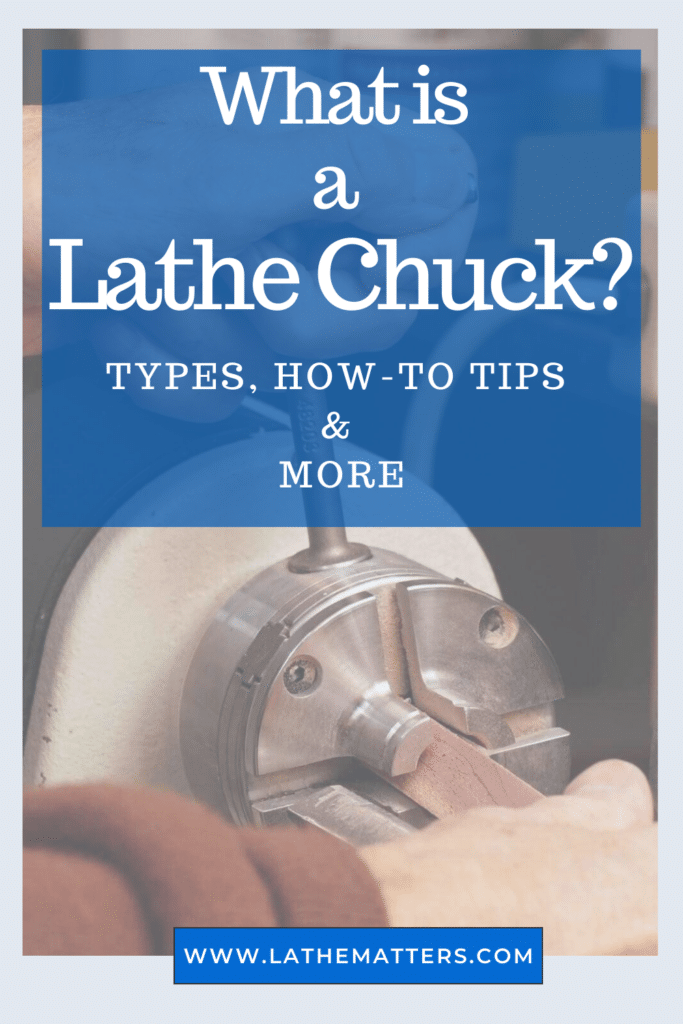Disclaimer: As an Amazon affiliate, I may earn a small percentage from qualifying purchases. This is at no extra cost to you. Learn more here.
One of the most common lathe accessories is the lathe chuck. A lathe chuck is a device that holds and secures a workpiece (wood or metal) on a lathe. It attaches to the lathe spindle and holds the rotating workpiece as you cut or shape it. Now that we have established what a lathe chuck is, let’s dive into types of lathe chucks, how to use them, tips for beginners and more.
Types of Lathe Chucks
There are several types of lathe chucks, including:
Jaw chucks
Lathe jaw chucks function as a clamp that grips your workpiece. There are several types of jaw chucks. One type is the scroll chuck. Scroll chucks are self-centering and can be either a 3-jaw chuck or 4-jaw chuck. There are also independent or combination jaw chucks which are types of 4-jaw chucks as well.
Collet chucks
A collet chuck uses a sleeve (or a collet) to hold the workpiece. Collet chucks are more precise. They are great for smaller, more uniform pieces of wood or metal. For more on this style, check out our types of collet chucks post.
How to Use a Lathe Chuck
Mount the Lathe Chuck
Attach the chuck to the lathe spindle. Need a refresher on the lathe spindle? Our post on parts of a lathe machine can help.
Also, check out our post for lathe chuck mounting methods.
Insert the Wood or Metal
Place your piece of wood or metal into the chuck.
Secure the workpiece
Use the adjustment mechanism to tighten the chuck around the wood or metal. Make sure the chuck components are snug but not overly tight. If they are too tight, they can damage your workpiece.
Lathe Chuck Tips for Beginners
Chucks do not come with a lathe. They are an accessory purchased separately. Woodturners can check out our post on the best wood lathe chucks to find the lathe chuck that is right for you.
Once you have your chuck:
Check Alignment
Make sure the wood or metal workpiece is centered and balanced in the chuck. This will help avoid vibrations and uneven cuts.
Tighten Evenly
Tighten the chuck evenly to prevent the workpiece from shifting. Be careful not to over-tighten because you may damage your wood or metal.
Lathe Chuck Practice
Get a feel for how tightly to clamp the wood or metal. A workpiece clamped too tight can cause issues, and if it’s too loose, it might slip. Once mounted and tight, don’t start on the piece right away. Safely turn the machine on at a low speed and watch how the piece rotates. If all looks good, gradually increase the speed. If there is any wobbling or the setup otherwise looks off, stop the lathe machine and make adjustments.
Lathe chucks are invaluable for woodturning and metal turning because they allow you to work with precision and control. Each type of chuck offers different benefits depending on the specific requirements of your turning project.
What is your favorite lathe chuck? Let us know in the comments below.

